Sower Meaning in the Bible: Parable and Spiritual Growth
In the Bible, the Parable of the Sower, located in the Synoptic Gospels (Matthew 13:1-23, Mark 4:1-20, Luke 8:4-15), employs the imagery of a sower dispersing seeds to exemplify the diverse responses to divine teachings. The sower represents prophetic figures spreading the Word of God, and the seeds symbolize the gospel itself.
The parable’s different types of soil—pathway, rocky, thorny, and good—illustrate the variable receptivity of individuals’ hearts to spiritual truths. This parable serves as a profound exploration of faith, receptivity, and the transformative power of the divine message, emphasizing the importance of nurturing a fertile spiritual environment.
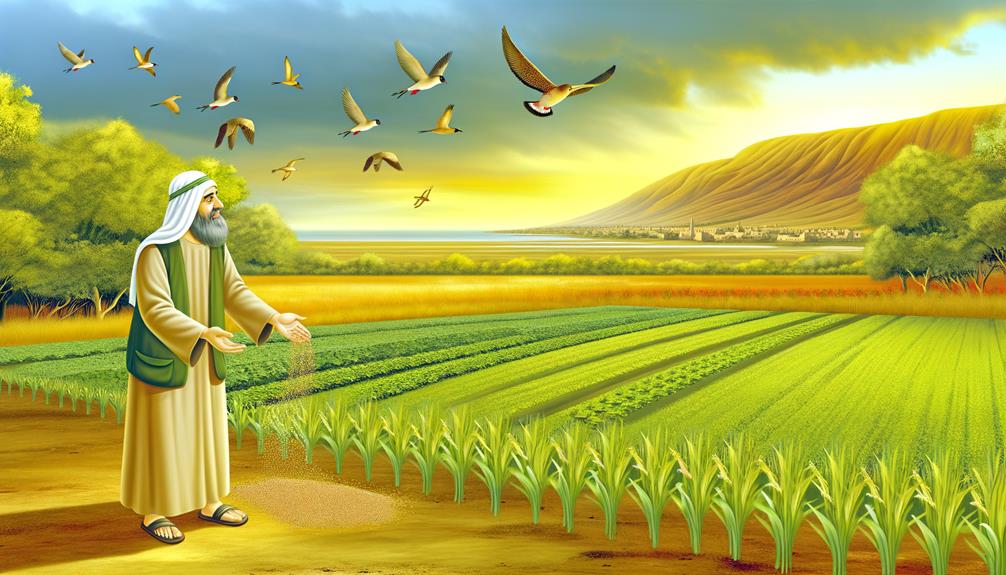
Sower Meaning in the Bible: Parable and Spiritual Teaching
| Aspect | Details |
|---|---|
| Word | Sower |
| Language Origin | Old English sāwan meaning to sow or plant |
| Biblical Usage | Featured in the Parable of the Sower (Matthew 13, Mark 4, Luke 8) |
| Meaning | One who spreads seed—symbolic of sharing God’s word |
| Context Examples | “Behold, a sower went forth to sow…” |
| Associated Themes | Evangelism, faith, spiritual growth, receptiveness to God’s word |
The Parable of the Sower
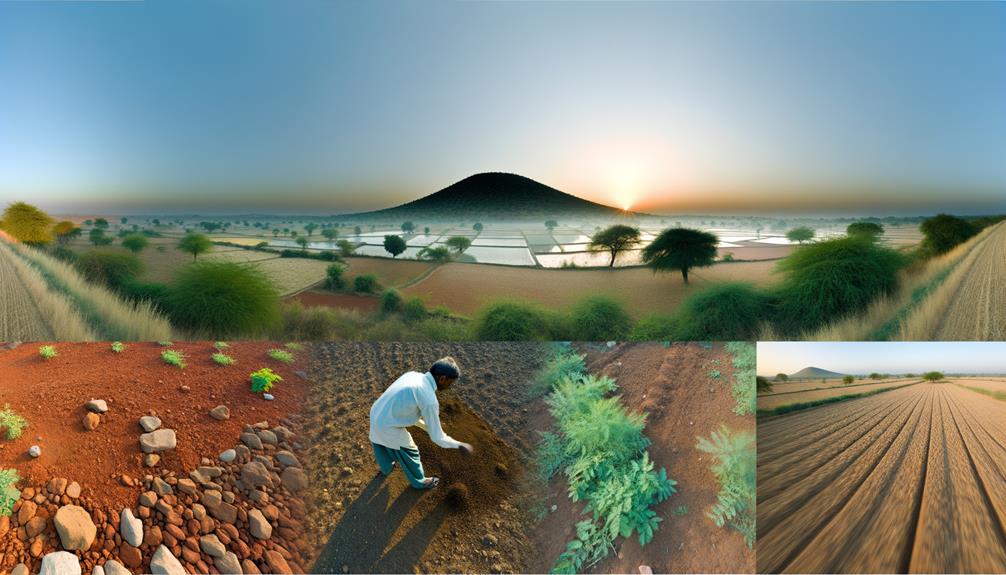
Introduced in the Synoptic Gospels, the Parable of the Sower serves as a profound allegory illustrating the varying receptions to the teachings of Jesus Christ.
Presented in Matthew 13:1-23, Mark 4:1-20, and Luke 8:4-15, the narrative describes a sower who scatters seeds on different types of ground.
Each type of soil reflects a different response to the divine message: the path where birds eat the seeds represents those who hear but do not understand; rocky ground symbolizes shallow acceptance that withers under trials; thorns indicate those choked by worldly concerns; and good soil characterizes those who fully embrace and bear fruit.
This parable succinctly encapsulates the diverse reactions individuals have to spiritual instruction.
Symbolism of the Sower

The symbolism of the sower in the biblical narrative is multifaceted, representing not only the act of disseminating divine teachings but also embodying the varied responses and spiritual conditions of those who receive the word.
In the parable, the sower’s role is emblematic of a divine or prophetic figure whose mission is to spread the gospel. This act of sowing underscores the indiscriminate and generous nature of divine grace, offered to all regardless of their receptiveness.
The different types of soil on which the seeds fall symbolize the spectrum of human hearts and minds, each with varying capacities for spiritual growth, resilience, and understanding.
Consequently, the sower becomes a pivotal figure, highlighting the interplay between divine initiative and human receptivity.
Seeds as the Word of God
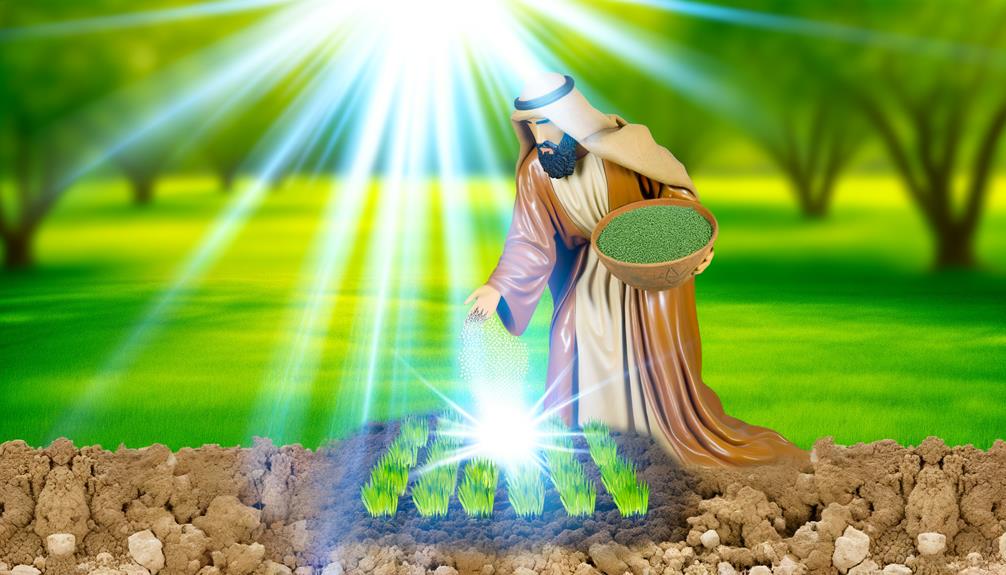
The Parable of the Sower elucidates the concept of seeds as the Word of God, illustrating how the dissemination of spiritual teachings can lead to varied outcomes based on the receptivity of individuals.
This allegory underscores the transformative power of faith, as the growth of seeds symbolizes the cultivation of spiritual understanding and commitment.
Through an analytical lens, one can discern the narrative’s emphasis on the intrinsic link between the quality of one’s faith and the fruition of divine wisdom.
Parable of the Sower
In the Parable of the Sower, the seeds metaphorically represent the Word of God, emphasizing the varied reception and outcomes depending on the spiritual readiness of the recipients.
The narrative delineates four types of ground: the path, rocky ground, thorns, and good soil. Each ground type signifies distinct responses to divine teachings.
The path symbolizes those who hear but do not understand, allowing evil to snatch away the message.
Rocky ground reflects superficial acceptance without deep roots, leading to a quick fall during tribulations.
Thorns represent distractions and worldly anxieties that choke spiritual growth.
Conversely, the good soil epitomizes those who hear, understand, and bear fruit, underscoring the importance of a receptive heart for spiritual flourishing.
Growth Through Faith
Recognizing the varied receptions of divine teachings as illustrated in the Parable of the Sower, one can further analyze how faith, akin to seeds, can flourish through the nurturing of a spiritually receptive heart.
The parable delineates different soil types, symbolizing the human heart’s readiness to receive God’s word. For faith to grow, it requires a conducive environment—one enriched with understanding, commitment, and perseverance.
Just as seeds need proper soil, water, and light, faith needs continuous spiritual nourishment through prayer, scriptural engagement, and community support.
The parable underscores that the proliferation of faith is contingent upon the individual’s proactive cultivation of their spiritual life, reflecting a symbiotic relationship between divine provision and human receptiveness.
The Four Types of Soil

In examining the four types of soil described in the Parable of the Sower, it is essential to analyze the distinct characteristics and implications associated with each.
The pathway soil represents a hardened heart impervious to spiritual truths.
The rocky ground reveals the challenges of shallow faith unable to withstand adversity.
In addition, thorny soil highlights the detrimental impact of worldly distractions and anxieties on spiritual growth.
Pathway Soil Characteristics
The parable of the sower, as articulated in the Synoptic Gospels, delineates four distinct types of soil, each symbolizing different responses to the divine message.
The pathway soil represents those who hear the word but fail to understand and internalize it, leading to its swift removal by external forces. This analogy underscores the critical nature of reception and comprehension in spiritual growth.
The hardened nature of the pathway soil evokes three profound reflections:
- Impenetrability: Reflects hearts resistant to divine influence.
- Vulnerability: Exposed to external adversaries, making spiritual theft easy.
- Neglect: Represents the lack of nurturing necessary for faith to flourish.
These characteristics highlight the necessity for an open and receptive heart to truly embrace the divine message.
Rocky Ground Challenges
Rocky ground, as depicted in the parable of the sower, symbolizes the initial enthusiastic reception of the divine message that ultimately falters due to a lack of depth and resilience.
This soil type represents individuals who receive the word with joy but fail to establish a firm foundation. When adversities or persecutions arise, their superficial faith withers.
The rocky ground underscores the necessity for deep-rooted spiritual growth, which requires more than transient emotions. It illustrates the challenge of sustaining faith amidst trials.
The metaphor serves as a poignant reminder that the true test of faith lies in its durability and capacity to withstand external pressures, emphasizing the importance of cultivating a robust, enduring relationship with the divine. This resilience is often reflected in sacred texts, where moments of trial ultimately lead to profound spiritual growth. Conversely, faith that falters under adversity may reflect a withered meaning in scripture, serving as a cautionary tale about the superficiality of belief. It is through these challenges that individuals can deepen their understanding and commitment, forging connections that are both meaningful and transformative.
Thorny Soil Implications
Thorny soil in the parable of the sower represents a scenario where the divine message is overshadowed by life’s worries, riches, and pleasures, ultimately stifling spiritual growth and fruitfulness.
This type of soil is illustrative of individuals whose initial acceptance of spiritual teachings is choked by competing priorities, leading to an unproductive spiritual life.
The implications of thorny soil can be analyzed through three critical elements:
- Worries of Life: Daily anxieties distract from spiritual focus and devotion.
- Deceitfulness of Wealth: Pursuit of material riches can lead to spiritual impoverishment.
- Pleasures of Life: Indulgence in temporal pleasures may result in neglecting eternal truths.
Understanding these elements helps elucidate the barriers to fruitful spiritual development.
Spiritual Receptivity

Understanding spiritual receptivity within the context of the biblical metaphor of the sower involves examining how different types of soil symbolize the varying degrees of openness and responsiveness to spiritual teachings.
The parable illustrates four soil types: the path, rocky ground, thorns, and good soil, each representing distinct levels of spiritual receptivity.
The path signifies a hardened heart, impervious to the Word. Rocky ground reflects initial enthusiasm but lacks depth, leading to a short-lived faith.
Thorny soil denotes individuals overwhelmed by worldly concerns, which choke spiritual growth. In contrast, good soil embodies those who hear, understand, and bear fruit, indicating profound receptivity and enduring faith.
These metaphors invite a deeper reflection on personal spiritual openness and responsiveness.
Jesus’ Teaching Method
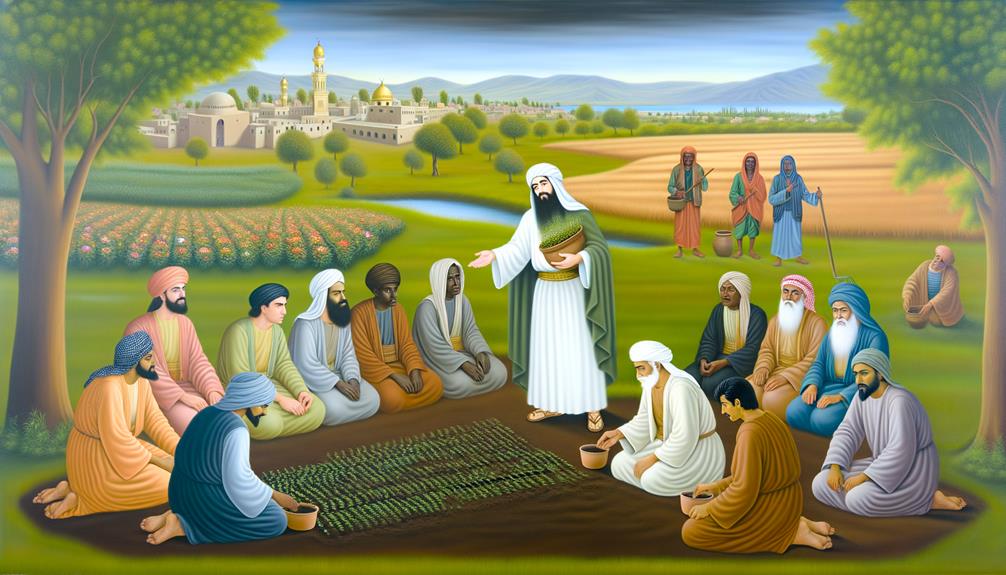
Jesus’ teaching method, characterized by the use of parables, served as an effective pedagogical tool to convey complex spiritual truths in a manner accessible to diverse audiences. This approach allowed Him to illustrate profound concepts through relatable, everyday scenarios, thereby bridging the gap between the divine and the mundane.
Parables encouraged listeners to engage in introspection, fostering a deeper understanding of their spiritual condition. They also protected sacred truths from those unwilling to seek genuine understanding, while revealing profound insights to the earnest seeker.
Key emotional impacts of Jesus’ parables include:
- Inspiration: Parables ignited hope and a desire for spiritual growth.
- Conviction: They often confronted listeners with their own shortcomings.
- Revelation: Parables offered new perspectives on God’s kingdom and human existence.
Lessons for Modern Believers
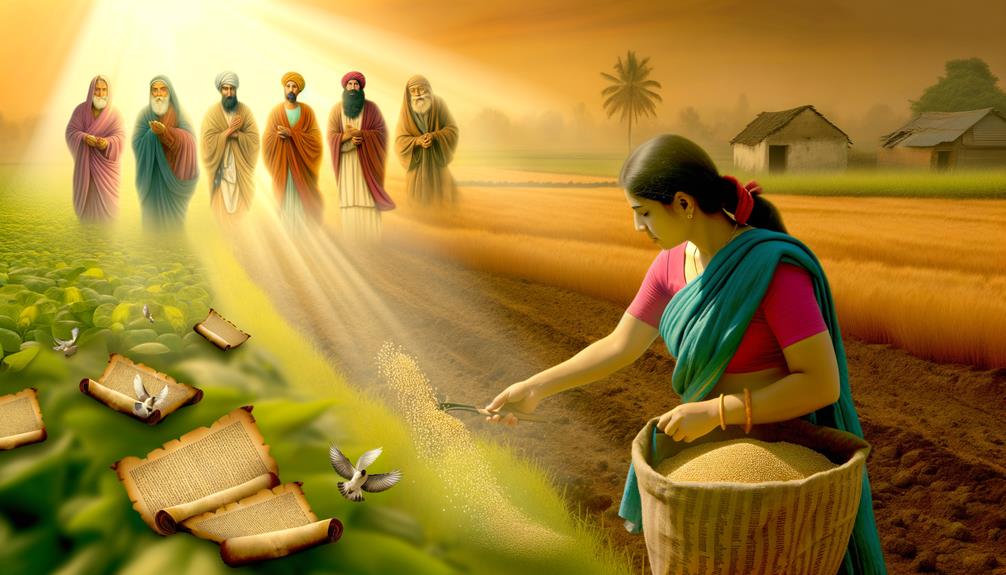
The parables of Jesus continue to offer invaluable lessons for modern believers, serving as timeless guides for steering through ethical dilemmas and fostering spiritual growth. The Parable of the Sower, in particular, underscores the importance of receptivity and perseverance in faith. It emphasizes the need for a fertile spiritual environment, akin to well-prepared soil, to nurture the Word of God. This analogy highlights three core elements:
| Element | Biblical Symbolism | Modern Application |
|---|---|---|
| Seed | Word of God | Spiritual Teachings |
| Soil | Human Heart | Receptive Mindset |
| Harvest | Spiritual Growth | Manifestation of Faith |
| Thorns | Worldly Distractions | Obstacles to Spirituality |
| Pathway | Hard-heartedness | Resilience in Belief |
This table elucidates the multifaceted lessons embedded within the Parable of the Sower, offering profound insights for contemporary faith practice.
Personal Reflection and Growth

Personal reflection serves as a critical mechanism for evaluating one’s spiritual journey, enabling believers to align their lives more closely with the teachings encapsulated within the Parable of the Sower. This introspection fosters growth by highlighting areas that require nurturing and transformation.
It encourages believers to:
- Identify Obstacles: Recognize the ‘thorns’—distractions and temptations—that hinder spiritual growth.
- Cultivate Soil: Foster a receptive heart, akin to the ‘good soil,’ to allow the Word to take root and flourish.
- Experience Renewal: Embrace the transformative power of faith, leading to a more fruitful and purpose-driven life.
Conclusion
To sum up, the Parable of the Sower offers profound insights into spiritual receptivity and the dissemination of divine teachings.
By examining the symbolism of the sower, seeds, and various types of soil, one can understand the varying responses to the Word of God.
How can modern believers apply these timeless lessons to foster personal growth and spiritual maturity?
The parable’s enduring relevance underscores the necessity of cultivating fertile ground within one’s heart for spiritual truths to flourish.






